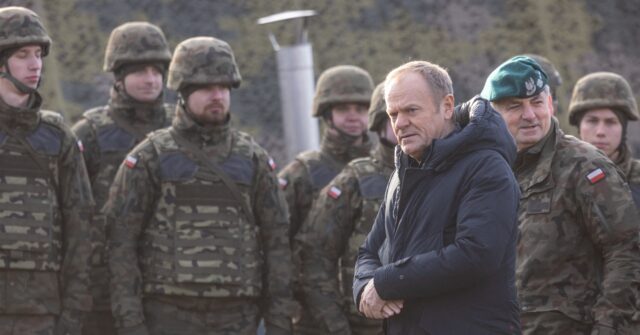Poland’s Prime Minister Donald Tusk recently visited the border with Russia’s Kaliningrad region to assess the construction of new military fortifications, emphasizing that this initiative represents “an investment in peace.” His visit is significant as Poland is set to assume the rotating presidency of the European Union shortly. Tusk and other Polish officials intend to prioritize defense issues amidst growing concerns over Russian aggression and uncertainty about the incoming Biden administration’s commitment to European security. This proactive stance seeks to bolster collective European defense, particularly in light of shifting geopolitical dynamics.
Tusk’s proposal for joint naval patrols in the Baltic Sea alongside Nordic and Baltic nations follows reports of potential sabotage to undersea data cables, indicating heightened vigilance in the region. The construction of the military fortification project, known as East Shield, has commenced this year and is designed to extend approximately 800 kilometers (500 miles) along Poland’s eastern borders with Russia and Belarus. These robust security measures come as Western officials accuse Russia of conducting hybrid warfare tactics against Europe, including disinformation campaigns and migration weaponization.
During a press briefing in Dabrowka, Tusk highlighted the importance of effective border security in deterring hostile actions. The country’s historical experiences with aggressive neighbors underscore the urgency of these initiatives. As a result of internal political challenges faced by France and Germany, Poland has positioned itself as a leading advocate for European security. With plans to allocate 4.7% of GDP toward defense in the coming year, Poland is on track to become a key player within NATO regarding military expenditure.
Tusk provided an estimate that the East Shield project would require an investment of at least 10 billion zlotys (approximately $2.5 billion). Notably, the Polish borders with Russia, Belarus, and Ukraine represent the easternmost frontiers of both NATO and the EU. His vision includes potentially extending this defensive network to the Baltic states of Estonia, Latvia, and Lithuania. Tusk reiterated the significance of these projects in deterring potential aggressors, framing the full scope of their development as necessary for safeguarding regional peace and stability.
The East Shield project involves a comprehensive strategy that integrates visible elements, such as anti-tank barriers or “hedgehogs,” with less obvious defenses like logistical support systems and threat detection measures. Tusk underscored that while some components are hidden from plain sight, the undertaking marks the largest military enhancement in Europe since World War II. This multifaceted approach to building border security reflects Poland’s commitment to not only defend its borders but also to contribute to broader European stability and deterrence against potential adversarial actions.
Overall, Tusk’s government aims to implement extensive security measures that underscore Poland’s proactive engagement in European defense. The efforts to fortify borders, conduct joint military activities, and invest significantly in defense present a clear message of resilience and readiness against potential threats. As Poland endeavors to take on a leadership role in fostering security and collaboration among its European partners, the East Shield project stands as a focal point in the ongoing efforts to mitigate risks posed by regional instability and the actions of neighboring states.

